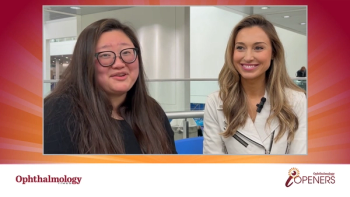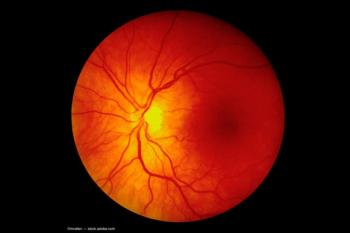
AAO 2023: Spotlight on IOLs
Light-adjustable lens in patients with previous RK: Improved visual and refractive outcomes after cataract surgery.
Tanner J. Ferguson, MD, and colleagues from Vance Thompson Vision in Sioux Falls, SD, reported favorable outcomes regarding the visual and refractive outcomes with the Light-Adjustable Lens (LAL) (RxSight) in patients who had previously undergone radial keratotomies (RKs) with implantation of this lens after cataract surgery.
The case series included patients with history of 4-cut, 8-cut, and 16-cut RKs. The authors highlight the value of the adjustable nature of the LAL in patients with prior RK, a population that characteristically has reduced accuracy of IOL power calculations.
Ferguson reported the results at the 2023 American Academy of Ophthalmology meeting in San Francisco.
The investigators undertook a retrospective study of patients with a previous RK implanted with the LAL. In this series, they included eyes with a plano target (0.00 diopter [D]) before their final lock-in and excluded eyes with concomitant ocular pathologies that limited the corrected distance visual acuity (CDVA). The primary outcome measures included the percentage of eyes achieving a monocular uncorrected DVA (UDVA) of 20/x or better and the % of eyes within ±0.25, ±0.5, and ±1.00 D of target.
Ferguson and colleagues included 44 eyes from 34 patients in the study. They reported the following results: the monocular UDVA was 20/20 or better in 66% of eyes, 20/25 or better in 75% of eyes, and 20/30 or better in 95% of eyes 1 month after lock-in following a series of light adjustments. With emmetropia as the target, 73% of eyes were within ±0.5 D, and 93% were within ±1.00 D of that target. The MRSE was 0.4 ± 0.4 D. The mean time following implantation of the LALs to the final lock-in procedure was 9.2 ± 3.1 weeks.
The authors concluded, “The visual and refractive outcomes in this study support the implantationof the LAL in eyes that had undergone a previous RK. The postoperative adjustability of the LAL affords improved outcomes for cataract surgery in these eyes.”
Ferguson also added, “These outcomes highlight the improved visual and refractive outcomes using the LAL in post-RK eyes, but patient selection and counseling remain important in these patients as the pre-existing higher-order aberrations may limit image quality and it is important to closely evaluate the degree of irregular astigmatism before surgery.”
In addition to Ferguson, the other co-authors included Marlee Jones, BS; Daniel Terveen, MD; Brent A. Kramer, MD; Vance M. Thompson, MD; and John P. Berdahl, MD
Newsletter
Don’t miss out—get Ophthalmology Times updates on the latest clinical advancements and expert interviews, straight to your inbox.













































